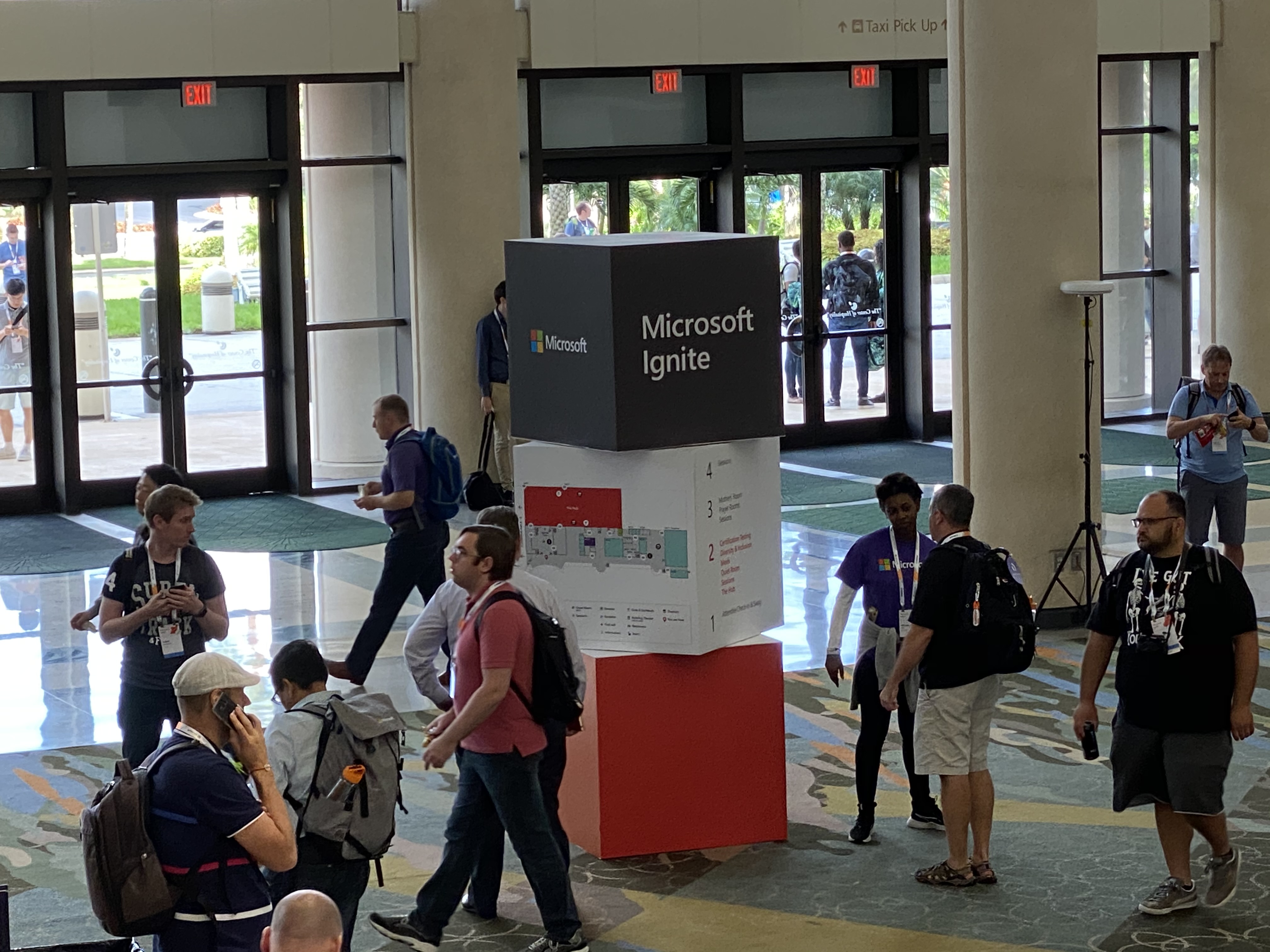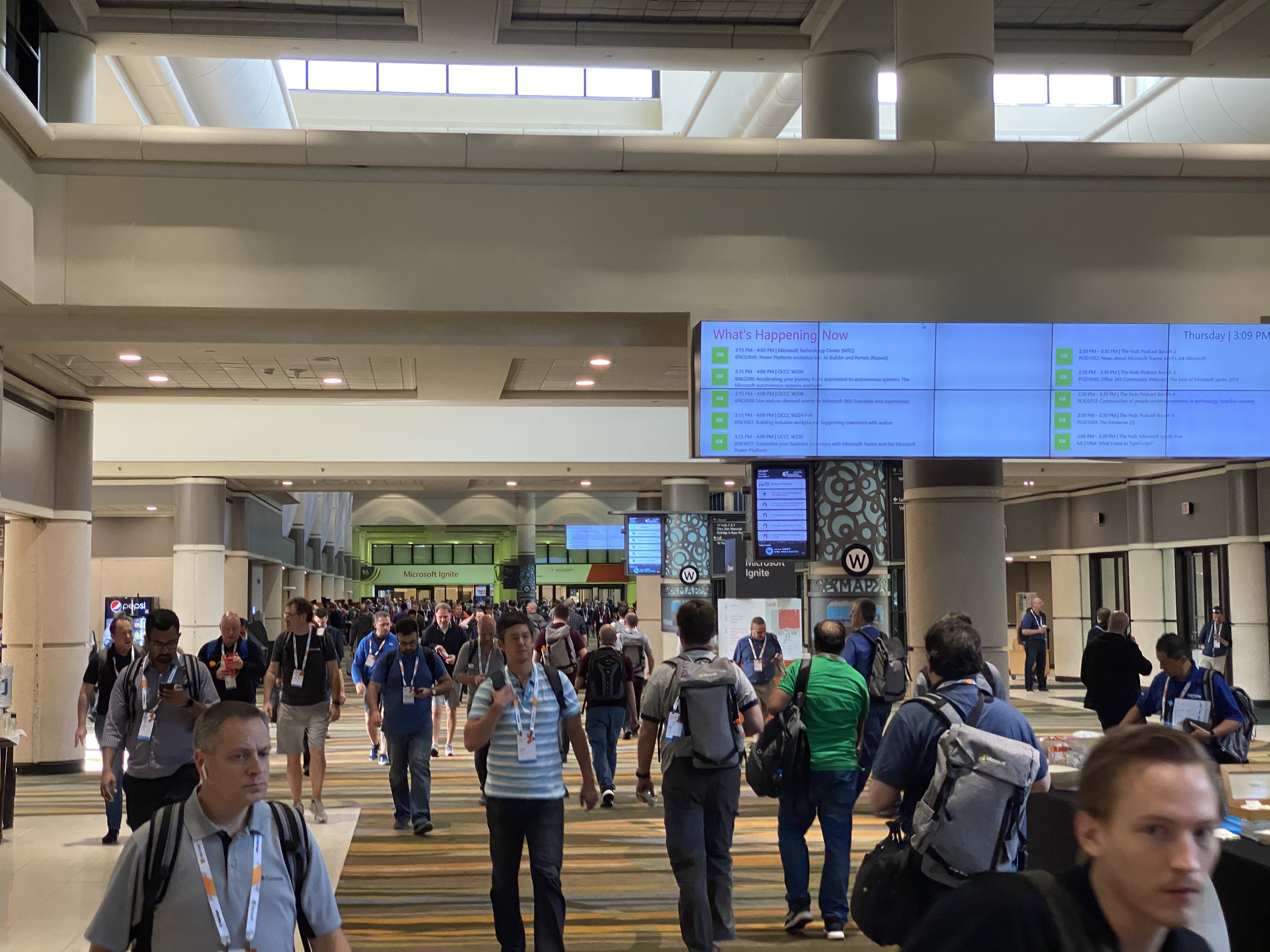Microsoft Ignite 2019 in Retrospect

So it’s Thursday, November 7. I’ve spent the week in Orlando, Florida, at Microsoft Ignite.
Microsoft runs many large events annually that draw a lot of attention from business partners and end clients, but Ignite and Inspire seem to be the two my contemporaries attend most often. Although both are good, Ignite seems to be the more technical of the two. This was the fourth year for Ignite, and attendance exceeded 28,000 people. (Amazing; that’s double my hometown population . . . wow.)
I’ve included a few pictures of the “Nerd Herd,” all of whom are worn as the fourth day of learning sessions continues. We’re all looking a little pale, which I would attribute to three days of overcast skies, but in full disclosure, it’s an occupational hazard. It seems there are never enough hours in a day, especially for folks in IT. So many found themselves working to support their organizations or their clients throughout this week. Dedication.
At a high-level of interest to me were the sessions on Azure Active Directory, moving toward “Zero Trust” (relevant to O365, MFA, and IoT), Microsoft Teams, migration, professional development, Ethics and AI, Machine Learning, and getting an introduction to the qubits of Quantum Computing. So many sessions, so little time! (Literally)
That would be my one complaint. There were learning tracks available with logistics factored in for moving between locations, but if you approach this event as a buffet, you could be really challenged—diving out of classes early or arriving late. That was kind of rough, but by Day 2, I was over stressing about it.
The food . . . was horrible—okay, maybe I had two complaints.
 In terms of professional connections and quality of information presented, however, it was worth every penny to attend—and, of course, as your roots deepen in the community, you make friends, sometimes over dinner, maybe drinks and cigars—hell, maybe even beer and vintage arcade games. There are always projects, but shared experiences and relationships make it all worthwhile. If you’re not in it for the long game with your clients, you’re doing nobody justice.
In terms of professional connections and quality of information presented, however, it was worth every penny to attend—and, of course, as your roots deepen in the community, you make friends, sometimes over dinner, maybe drinks and cigars—hell, maybe even beer and vintage arcade games. There are always projects, but shared experiences and relationships make it all worthwhile. If you’re not in it for the long game with your clients, you’re doing nobody justice.
One last thing: HumansofIT is a group that was started with a charter for Empowering IT pros to achieve more by humanizing tech. I heard the call and sipped the Kool-Aid (actually, it was espresso). Apologies for mixing metaphors, but I expect it tracks. What caught my eye was the call for mentors and mentees to self-identify. Like many, I can be both, depending on the subject. I still need to complete my profile, but I think it’s a worthy call.
We here at Convergent Technologies would love to be your partner in change. We’ve assisted many organizations with Microsoft Active Directory projects including assessments, segmentation, consolidation, as well as other forms of migration. How may we help you?
